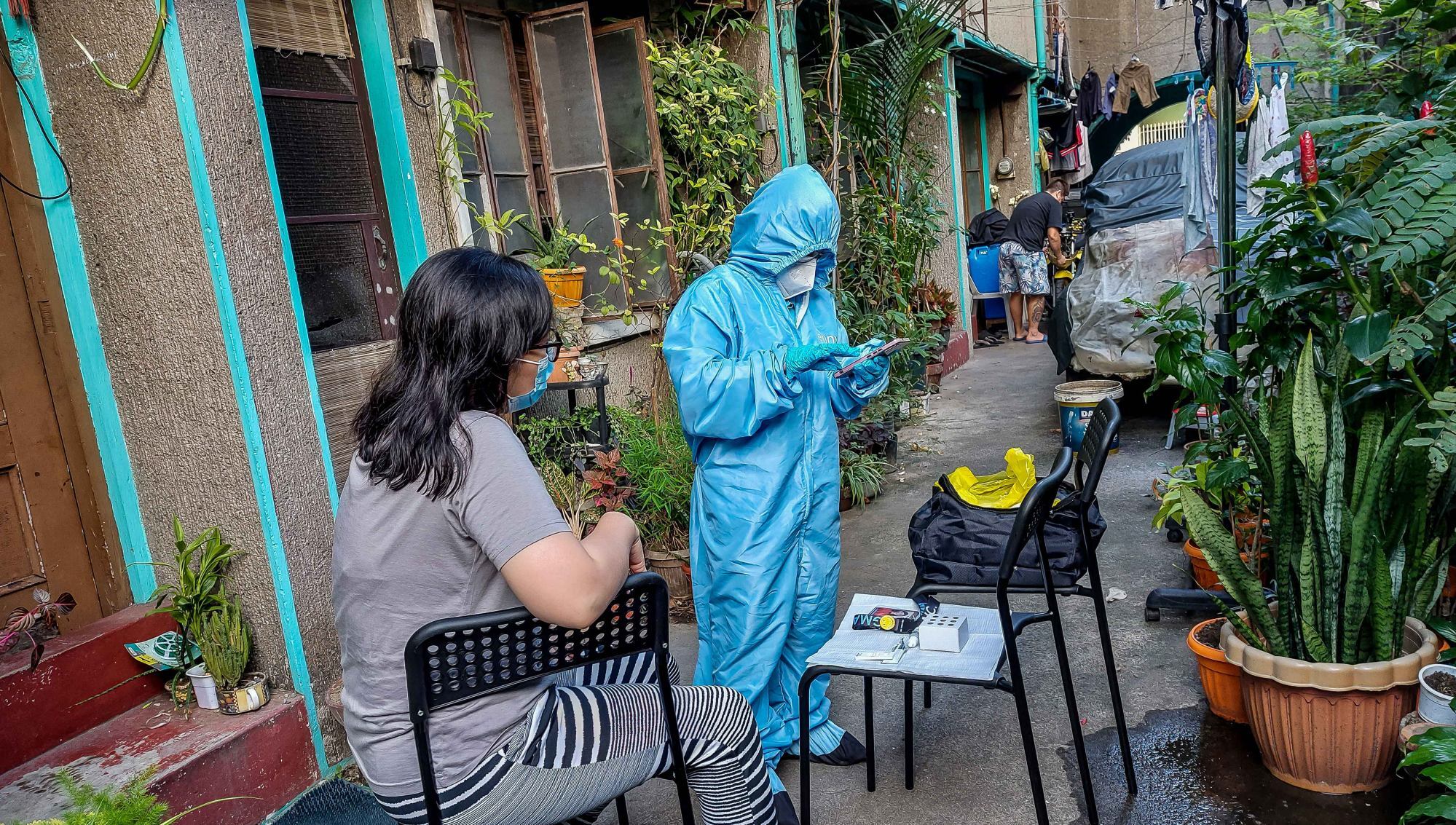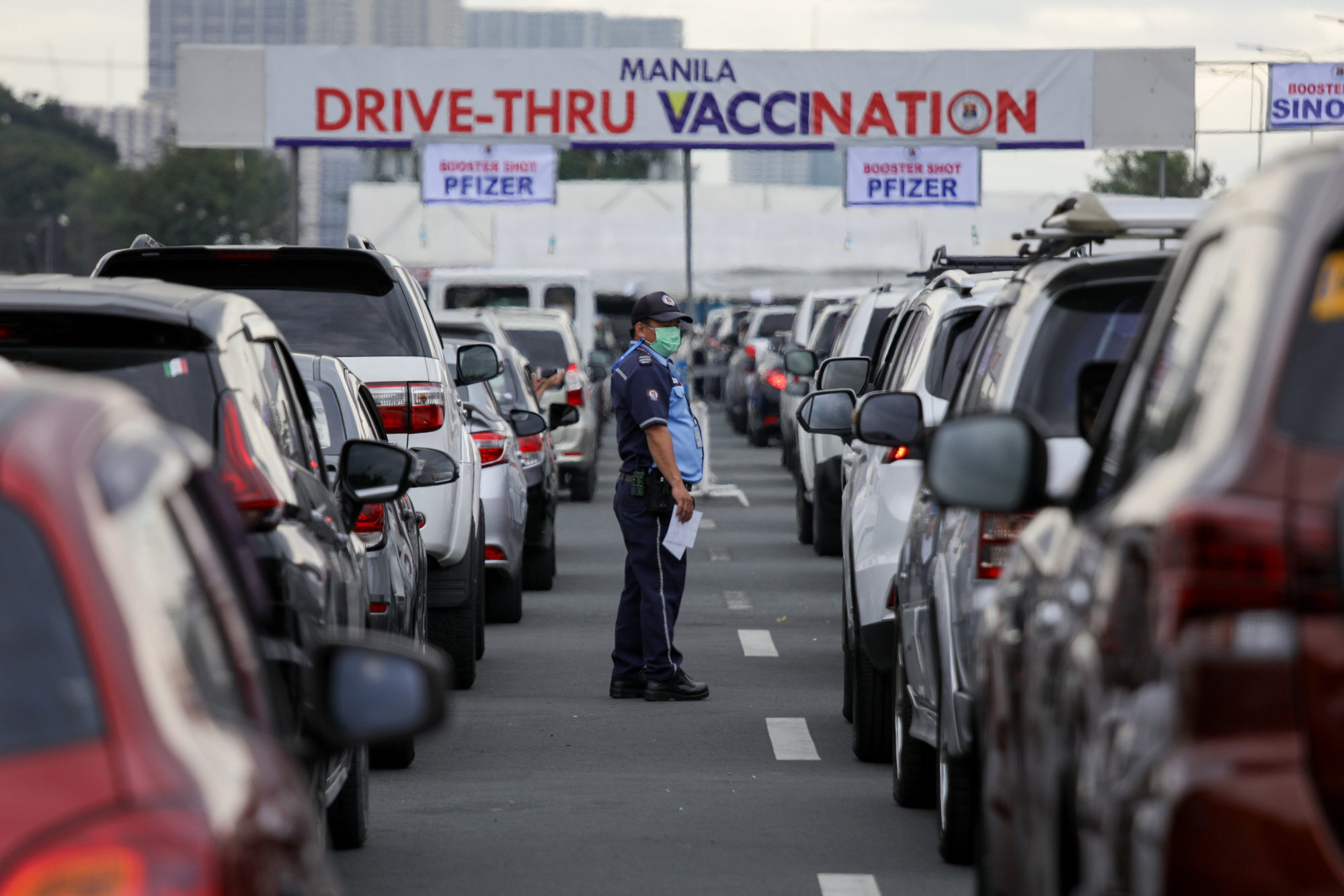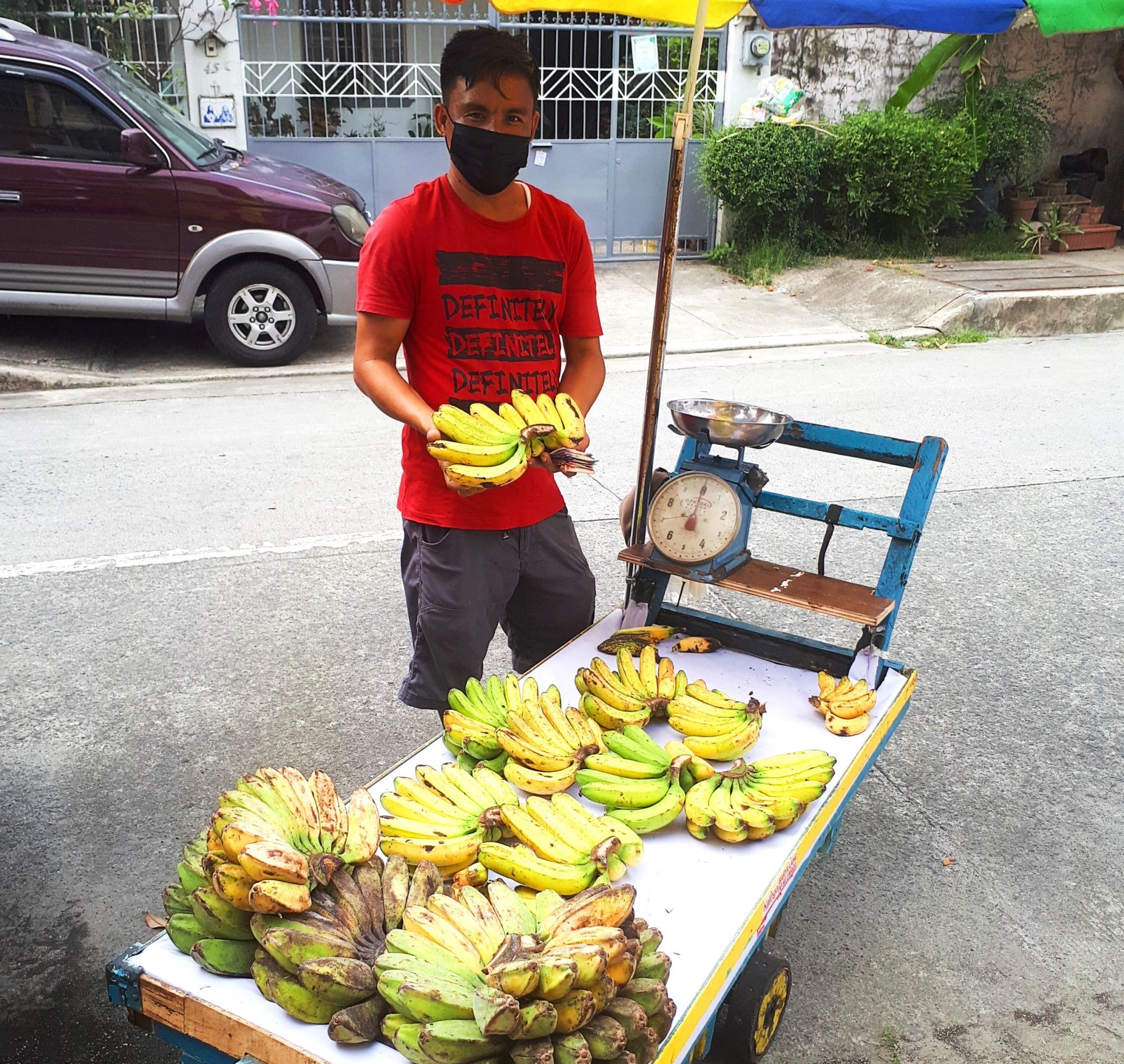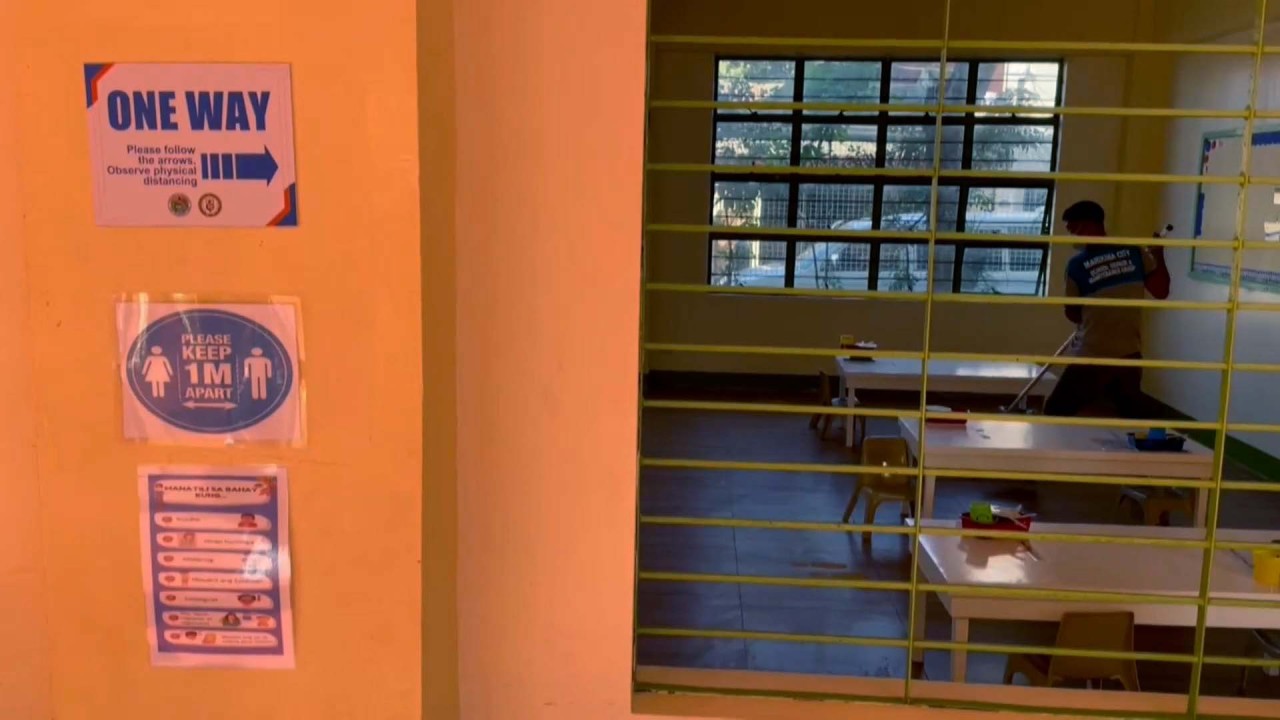
Filipinos fear Omicron will ‘paralyse’ nation as government’s focus turns to election
- Just under half the country has been double-vaccinated, while the Duterte administration has ruled out another punishing lockdown ahead of polls in May
- Cases hit a record on the weekend with the health ministry confirming the community transmission of Omicron around Manila
On the morning of January 7, a sound truck cruised the streets of one middle-class district in Manila’s Quezon City to alert residents of the rising number of Covid-19 cases and where they could get vaccinated.
The announcer concluded by saying, “Patnubayan tayo ng Panginoon” – may God guide us.

Infections have been doubling every week since the end of last year. According to the Philippine health department, 2,961 new cases were recorded on December 31. On January 12, the figure was 32,000. Plotted on a graph, the growth represents an almost vertical line. Active cases hit a record of 280,813 on Saturday.
Dr Anthony Leachon, a former senior adviser to the Philippines’ Covid-19 task force, said the growth was due to “the arrival of Omicron”, as well as the Christmas rush and citizens’ violations of health protocols.
The variant “could only have come from another country”, he added.
More than 2 in 5 people tested for Covid-19 in the Philippines have it
Omicron could not have arrived at a worse time for the Philippines. Because of government delays in securing vaccines and syringes, and incompetence by officials in distributing them, the country had vaccinated only 53 million people, or just under half of its 110 million people, as of January 11.
This fell short of the 50 per cent vaccination rate the government was aiming for by the end of 2021, which had already been lowered from an initial goal of 70 per cent set earlier in the year.
Leachon said rather than reducing the targets, the government should be raising them to 90 per cent at a time new Covid-19 variants were spreading across the country like wildfire.
Christmas surge
In October, the Duterte administration relaxed Covid-19 restrictions, including waiving quarantine for arrivals from selected countries.
Having been cooped up at home in one of the world’s longest series of lockdowns, tens of thousands of people in Manila flocked to restaurants, shopping centres and public markets during the Christmas season. Defying protocols, they brought their children with them and ignored social distancing. The resulting crowds became superspreader events for the Omicron variant that, unknown to the authorities, had arrived in December from abroad.
One Covid-19 patient, who has been infamously dubbed the “Poblacion girl”, travelled to the Philippines on December 22 from the US and illegally left a quarantine hotel to go partying in Poblacion, Makati. She turned out to be Covid-positive and might have infected at least 12 other people.
More Australians end up in hospital amid soaring Omicron outbreak
As infections spread across Manila, Filipinos took to social media to report they had likely contracted Covid-19, with some suffering a sore throat and high fever. Many of those who fell sick said they had received at least one vaccine shot.
Leachon noted that while the symptoms of Omicron appeared to be less severe than other variants, it could still “paralyse the country”.
“On an individual basis, [Omicron] may sound mild like influenza, but because of the sheer volume of patients in such a short time, the risk of overwhelming the health care system is much bigger,” Leachon said.
On January 10, Secretary of Health Francisco Duque III warned that although many of the new Covid-19 cases were in Metro Manila, the entire country was at “critical risk” as the number of patients had exceeded 70 per cent of the Philippines’ ICU occupancy rate.
The same day, infectious disease specialist Dr Rontgene Solante told news website Rappler that the number of infections in Metro Manila indicated “massive and uncontrolled community transmission” of Omicron.

‘Here it comes again’
For businesswoman Irene Santiago, 55, the prospect of Omicron sweeping the country fills her with dread.
The single mother of two children owns a small restaurant in Manila’s Malate district, which she has been struggling to keep afloat for the past two years.
During the first lockdown in 2020, her restaurant’s earnings fell 50 per cent. “There was no dine-in, and there was a curfew.”
Santiago managed to retain some customers by getting their phone numbers just before lockdown started, so she could text them her menu and offer meal deliveries. “Business was really down, you had to be diligent on social media, in texting, in sending out menus.”

She listed her restaurant on the Grab and foodpanda delivery apps, but said those services only sent through her earnings about seven to 10 days after each transaction.
Although prices of ingredients rose – “last year cooking oil was 160 pesos (US$3.13) a gallon, now it’s 340 pesos” – she did not raise her own prices, further cutting into her income.
Describing her existence as “hand to mouth”, Santiago said her family’s “world revolves around our business”.
She works six days a week, goes to the market with trepidation – she wears two masks and takes vitamins after each trip – and has to find the money to pay the rent and her staff’s wages.
She was forced to let go three of her 10 workers, and turned to a moneylender that offered her a quick loan at 20 per cent interest.
Just when things were starting to pick up again with some good months last year, Omicron hit. “Here it comes again,” she said.
Santiago hoped the government would offer more support to businesses like hers so she wouldn’t be forced to go to the moneylender again.
‘Like a bomb has hit us’: Omicron punctures hope for Thai businesses
For Jonathan Ravelas, chief marketing strategist of BDO Unibank, the key to the Philippines’ economic recovery was fast-tracking vaccinations.
“Most likely there will be more new variants. We have to be prepared for one or two variants a year,” he said.
Ravelas said after nearly two years of lockdowns and with a slowly reviving economy, indicators were improving.
“In December 2021, inflation fell to 3.6 per cent, down from 4.2 per cent in November. I expect it to be 3.4 per cent this year,” he said.
“Unemployment in December was 6.5 per cent, down from 7.4 per cent. It should be coming down again closer to 5.7 per cent, which translates to 3.5 million jobless, mostly in the national capital region.”
Ravelas supported the economy being kept open despite Omicron as “we don’t have the additional money to do the lockdowns, we have to live with the virus”.
“The year 2022 will be a tale of two halves – the first half driven by uncertainty, the second with more certainty and cautious optimism,” he predicted.

Even if the economy improved however, many things would have changed permanently for dentist Ophelia Alcantara, who has a small clinic in Makati.
Her practice was hard hit by new regulations brought on by the community quarantine.
Dental clinics “were not allowed to open until we changed air ventilation, put up exhaust fans, protective barriers, Hepa filters and PPEs against aerosols”, Alcantara said. “I had to study airflow, relocate an air conditioner and put up high-volume evacuators.”
During the first year of quarantine, she only saw 30 per cent of her usual clientele. “During those months, I had to pay the rent and my secretary’s salary – I eventually had to use my savings to cope.”
Every dental session sees Alcantara wearing a PPE suit with an N95 mask, and she finishes up by using ultraviolet steriliser and fogging machines to disinfect the clinic.
“My earnings are really affected, I haven’t any reasonable savings yet and I have to buy supplies and pay all kinds of taxes at the start of the year,” she said. “I’m hoping things will get better with more people being vaccinated. Many are suffering painful toothaches and can’t delay seeking treatment.”

Election distraction
Meanwhile, as the Philippines gears up for its presidential election in May, Alcantara said she did not expect the government’s pandemic handling to improve.
“They bungled a lot of efforts in solving this pandemic and brought misery to our country,” she said. “Now their focus is on the coming election.”
It’s an opinion shared by Ron Acoba, managing director and chief investment strategist of Trading Edge Consultancy.
“The government, in my opinion, botched the way it handled the pandemic, especially at the onset,” he said. “It should have focused on technology-backed contact-tracing, following the best practices imposed by countries like Japan and South Korea.”
Acoba said that “forming the Covid inter-agency task force was a good idea, but it undermined itself when military and police personnel were included”.
The result of government mismanagement, according to Acoba, is that “any way you look at it the Philippines is on the verge of a multi-year recovery”.
‘We are too late’: Omicron sends India’s virus cases to 7-month high
The administration of President Rodrigo Duterte has ruled out another economically punishing lockdown, but has not made it any easier for Filipinos to survive during the pandemic amid the threat of Omicron.
It has not made Covid-19 testing free, will not implement rigorous contact-tracing, and has told those who have tested positive to isolate in their homes rather than in hospitals.
One RT-PCR test costs slightly more than 3,000 pesos (US$58), an expense that could cripple a household in a country where the daily minimum wage ranges from 316-537 pesos.
The result is many Filipinos do not get tested to avoid having to pay and risk missing work. This raises the possibility that many workers could be potential Omicron spreaders.
In addition, the government has mandated a “no vax no ride” policy, where passengers of public transport have to prove they have been vaccinated or be denied rides. But authorities have left drivers of jeeps and buses with the burden of enforcing the rules.

One vendor who has managed to weather the Covid-19 storm is Ervin Tungala, 32, who makes a living selling bananas out of a cariton – a cart – he pushes around a neighbourhood in Quezon City.
“Customers say bananas are a medicine against Covid-19,” said Tungala, who sells 300 kilograms of bananas a week.
The trader, who is double-vaccinated and wears a KF94 mask, rents a vehicle to get bananas from the port area in Manila, where they arrive from Davao.
Tungala said he’d not received any financial support from the government, except for “a little rice and some canned food”.
If he had one wish, it was that “the government should help the poor”.



